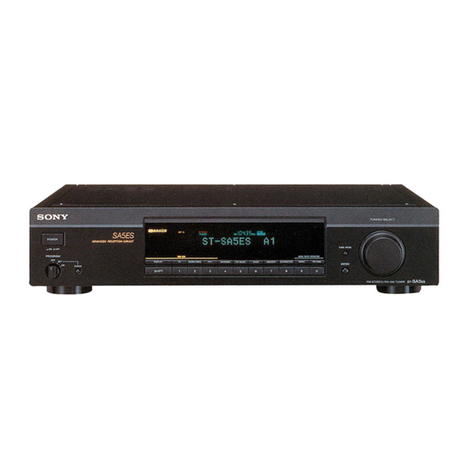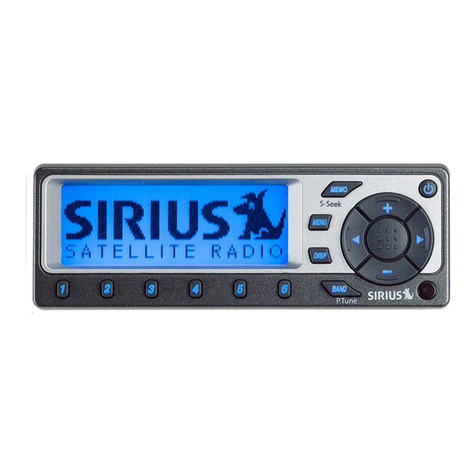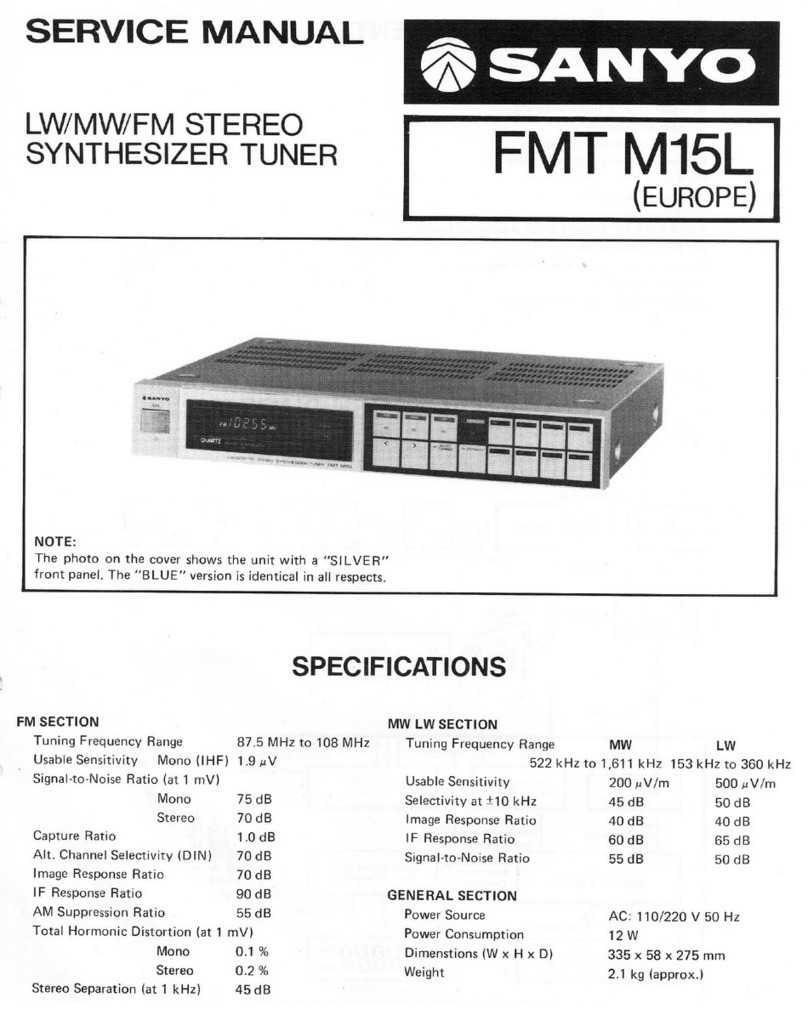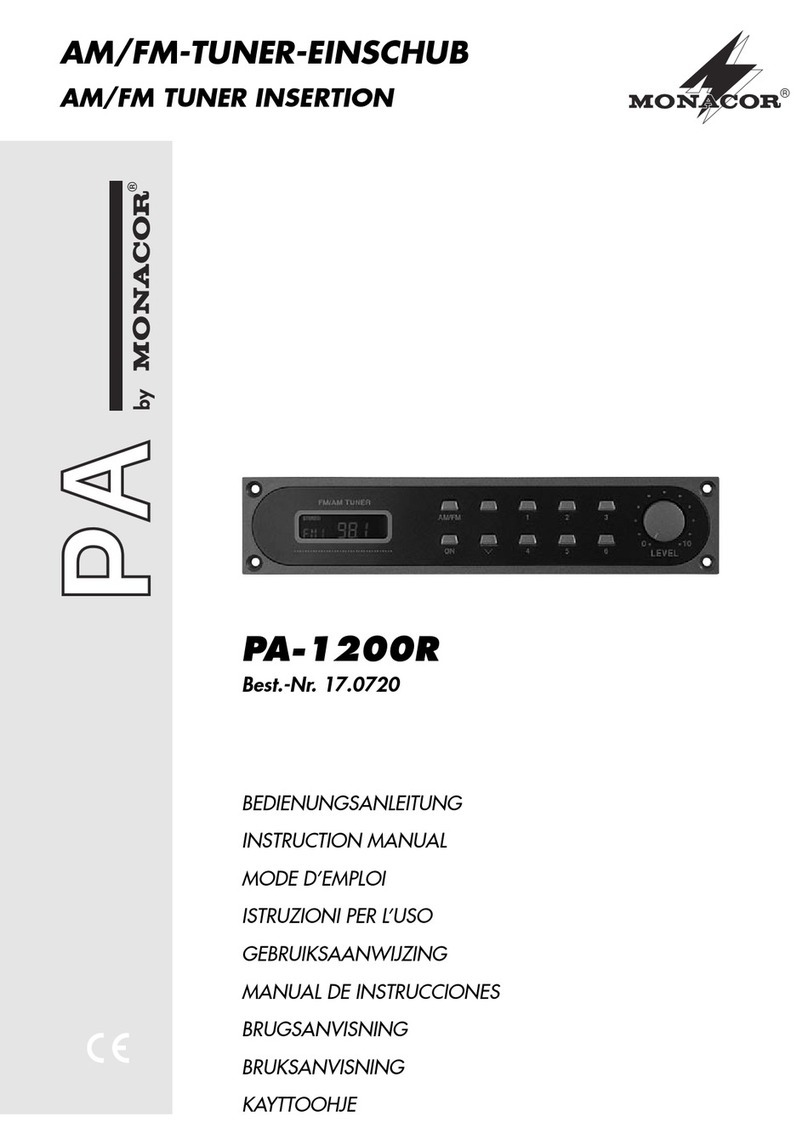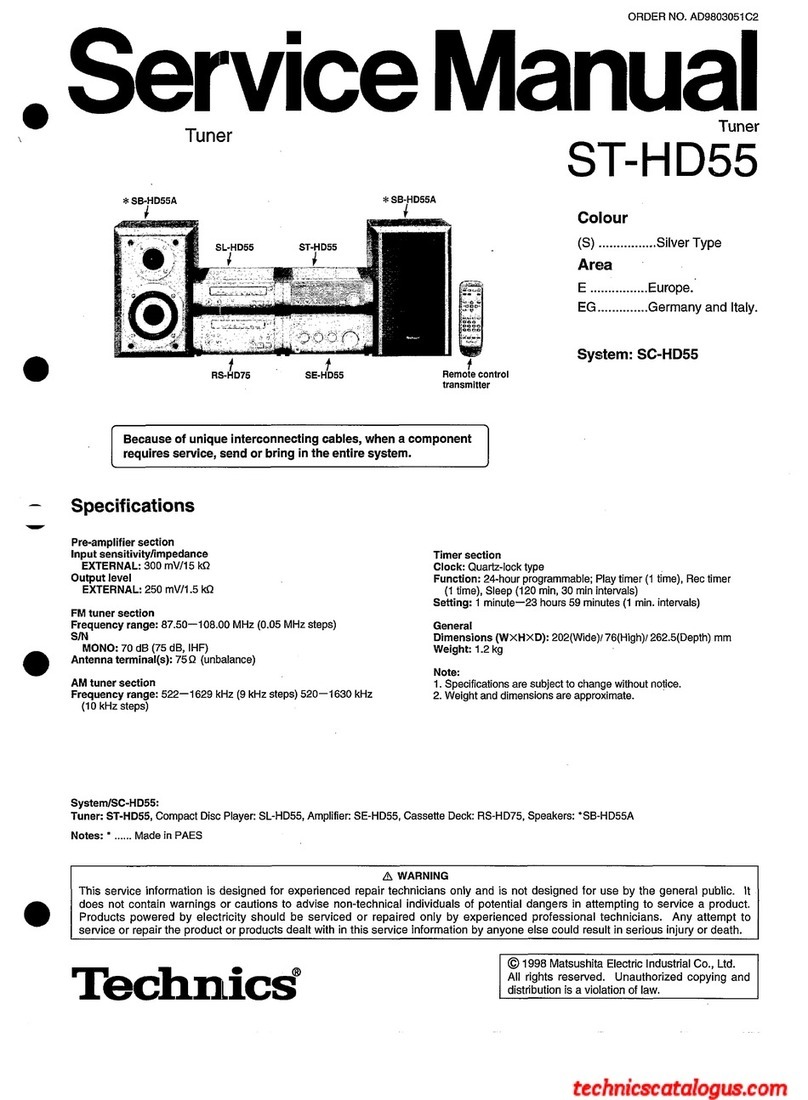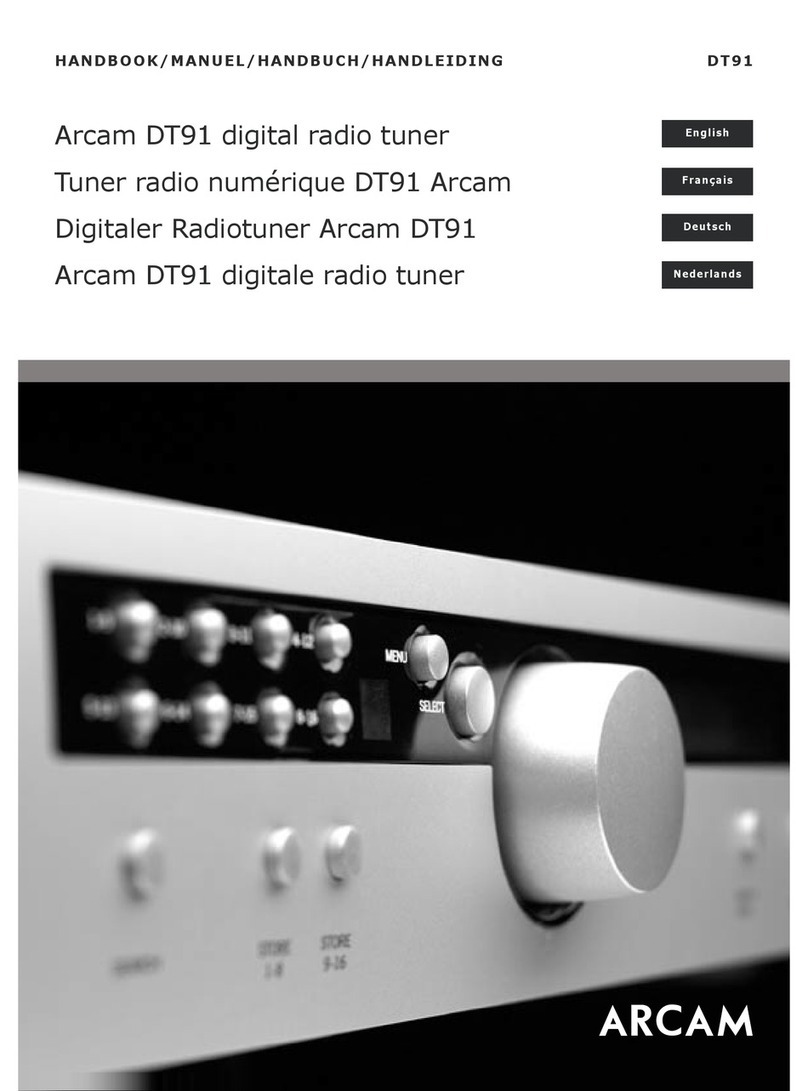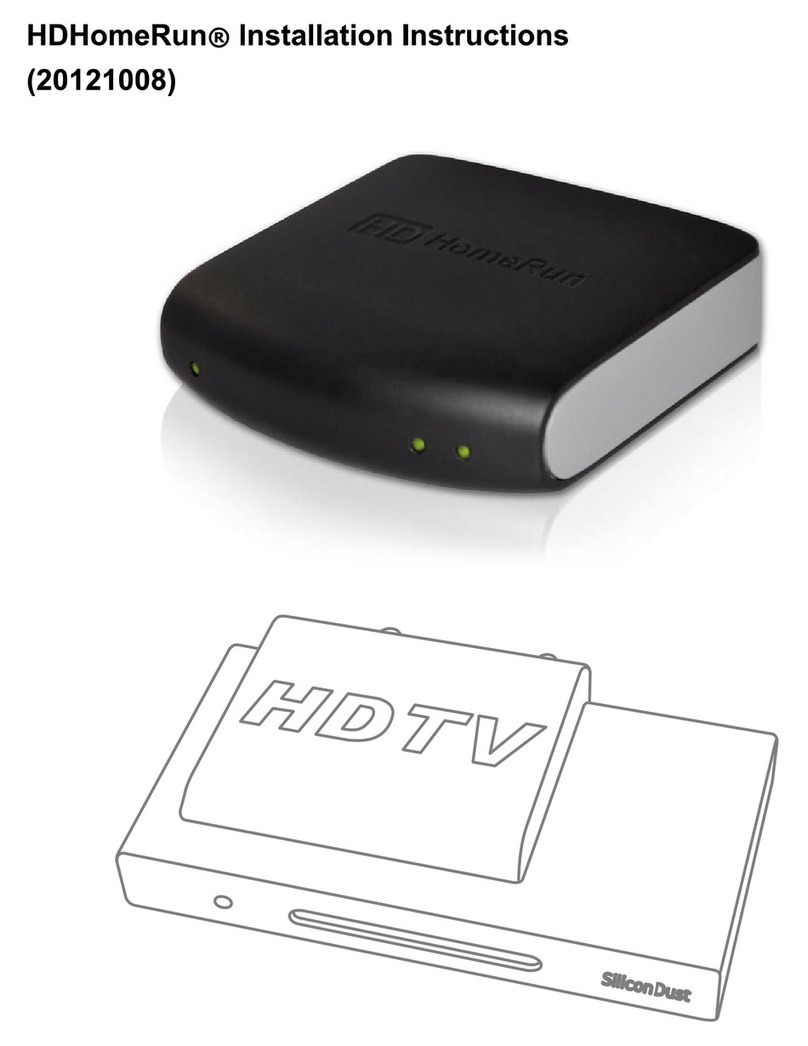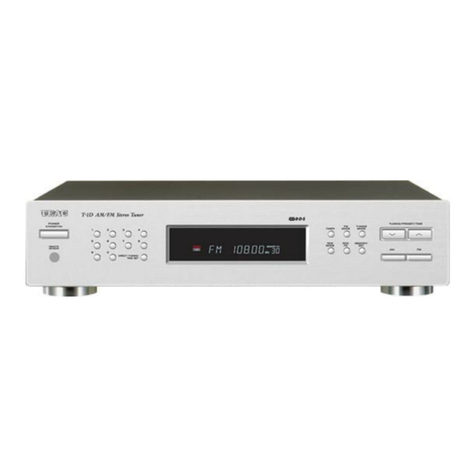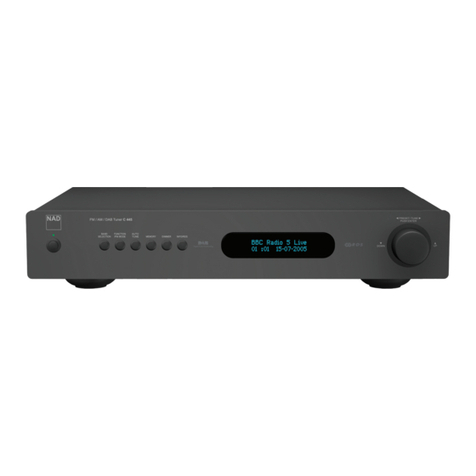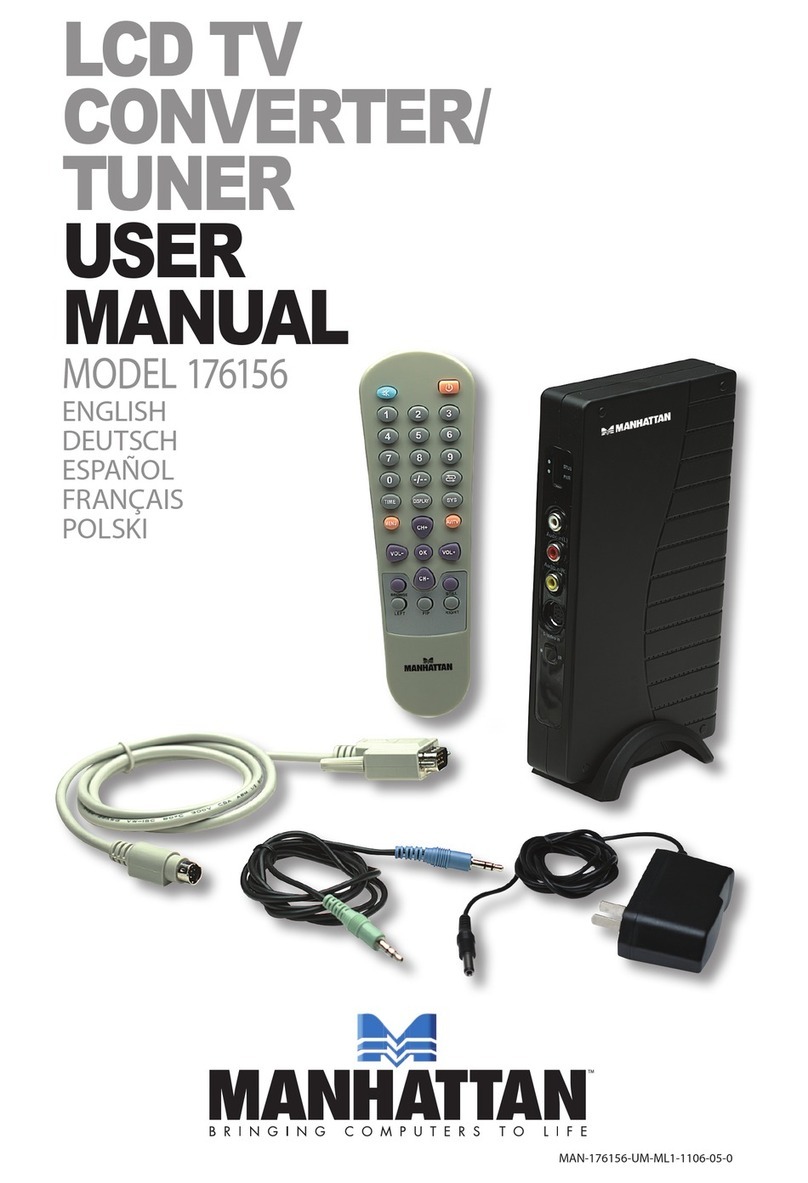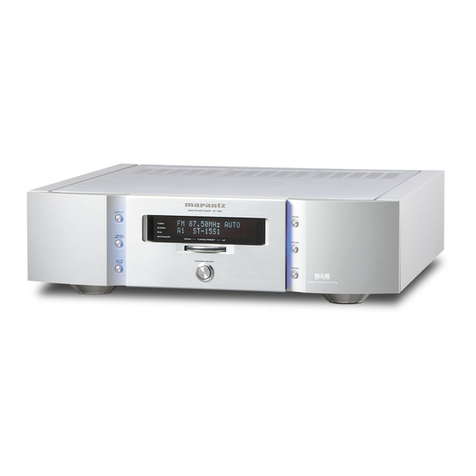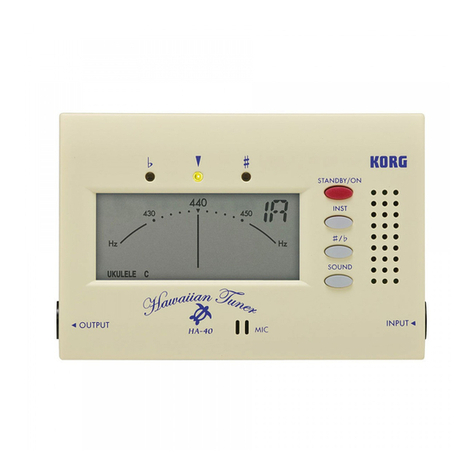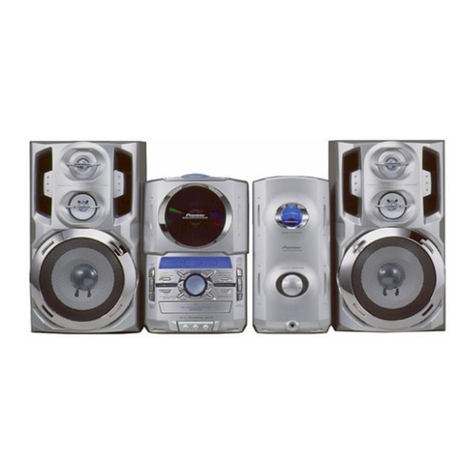
mechanical installation
a) HEAT DISSIPATION (VENTILATION): In common with
other electronic equipment, the HFT~90 produces consid-
erable heat In normal operation. Unless continuous and
adequate air flow Is obtained around the heat producing
elements, these elements will over-heat and their useful
life will be greatly reduced.
Adequate ventilation will be provided If the tuner is In-
stalled In an open-back conso Ieprovided that the top of
the tuner is spaced at least two inches Below anyshe I
f
mounted above It. If the cabinet is enclosed at the rear,
provide several large holes or slots as low down and as
high up in the cabinet back as possible. As an alternative,
holes may be provided In the sides, bottom, or top of the
cabinet. The Important thing to remember Is that effective
ventilation requires provision for cool air to enter at the
bottom and hot air to leave at the top.
If the tuner Is not installed In aconsole, if may be situated
on an op^n surface or on ashelf ofa bookcase. Four rub-
ber feet are also provided so that the tuner will not mar
the surface of furniture on which It Is placed.
If If Is considered essential, because of space limitations
to “stack" amatching amplifier such as the HF”12 with
the tuner (not recommended for reasons described above),
place the amplifier above the tuner since the amplifier
produces substantially more heat and requires more ven-
tilation.
b) POSITION; The specified absence of tuning drift can
be fully assured only If the tuner Is placed In an approxi-
mately horizontal position, which is therefore strongly
recommended.
c) EASY ACCESS TO CONTROLS; Mount the tuner at a
height which will permit easy manipulation of the con-
trols, Amplifier controls should be located nearby,
d) ACCESSAB1LITY TO PARTS: Tubes are the most fre-
quently replaced Items in electronic equipment. If the
tuner Is installed In aconsole, sufficient space should be
allofed to reach and remove any tube In the tuner. Further-
more, antenna and output terminals of the amplifier should
be accessible to permit easy Interchanging of system com-
ponents for comparison. If antennas are strung around the
back of the console In which the tuner is installed, arrange
them so they will not Interfere with access to the tuner.
d) ACOUSTICAL ISOLATION: If tuner and speaker are
installed In the same cabinet (not recommended), provide
sufficient separation to minimize mechanical speaker vi-
bration reaching the tuner which may result in microphonics
and howling. The minimum separation is about one foot,
Abaffle, usually the tuner mounting base, should be pres-
ent between tuner and speaker. In extreme cases, It may
be necessary to mount the tuner oi> sponge rubber pads.
CONSOLE MOUNTING
NOTE; The tuner may be instal led in aconsole with or
without "cover", consisting of twoside pieces and aper-
forated slide-out top. Special side brackets are required
and supplied for assembly purposes when the "cover" is not
used. We recommend the use of th e"cover" even In con-
sole mounting for the additional shielding and protection
if provides. The thickness of the console panel may be up
to 3/8"
.
a) Operations on console front panel preliminary to am-
plifier mounting:(1 )Tape the panel template provided
to the face of the console so that the top of the mounting
surface line on the template Is level with the top of the
amplifier mounting shelf. (2) Use an awl or anal Ito pierce
the centers of the two 3/8" diameter holes for the controls,
and the two small holes for mounting the control plate, to
transfer their locations to the console panel beneath. (3)
Use an awl or nail to mark the four corners of the rectan-
gular tuning dial cut-out. (4) Remove the panel template
and draw the dial cut-out with apencil .(5) Drill only
the ho Ies for the panel controls (the two small holes which
have been marked are for wood screws). (6) Now make
the dial cut-out, which must be done accurately. It is
recommended that the rough cut-out be made slightly
undersize and then finished accurately and smoothly with
afile. Then use the file to make asmoothly finished 45
degrees bevel on the lower edge of the cut-out sloping
downward from the outside surface to the inside surface.
The beveled surface must be smooth so that the wire going
to the tuning eye socket will not catch or otherwise be
obstructed when the tuning eye Is moved along the dial.
b) Tuner mounting in console: (1 )Pul Ioff the control
knobs, (2) Remove the four screws that fasten the bezel
to the side pieces (or the special brackets if the tuner is
supplied without "cover" and remove the bezel, which is
not used In console mounting. (3) Remove the control
plate, which is attached to the bezel by two screws and
nuts. (These may be discarded since they are unsuitable
for attaching the control plate to the console panel and
two 4X 3/8 wood screws have been supplied for this pur-
pose.) (4) Fasten the control plate to the console panel
with the 2^4X3/8 wood screws. (5) If the rubber feet
have been inserted In the bottom plate, remove them. (They
may be pried out with athin screwdriver.) (6) Place the
uniton the mounting shelf and slide It forward until the
front surface of the tuning dial rests against the turned-in
edge of the dial cut-out in the control plate and the con-
trol shafts are centered in the holes. (7) With asharp
pencil, draw the outline of the side and rear bottom edges
on the chassis shelf. As the bottom plate falls short of the
full width by 3/16" on each side, draw new side edge lines
3/16" inside the original side edge lines. (8) Now take
the chassis off the shelf. (9) Remove the 6screws which
fasten the bottom plate to the side pieces (or the special
2
